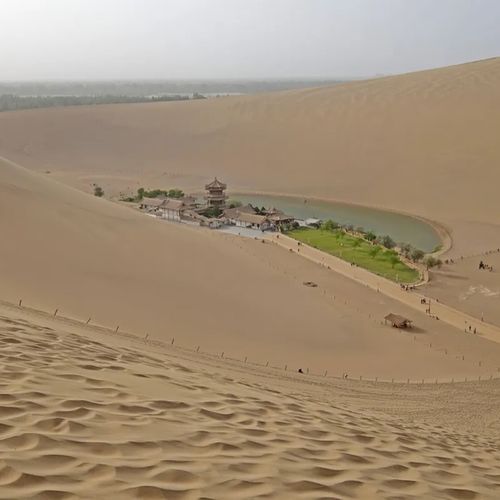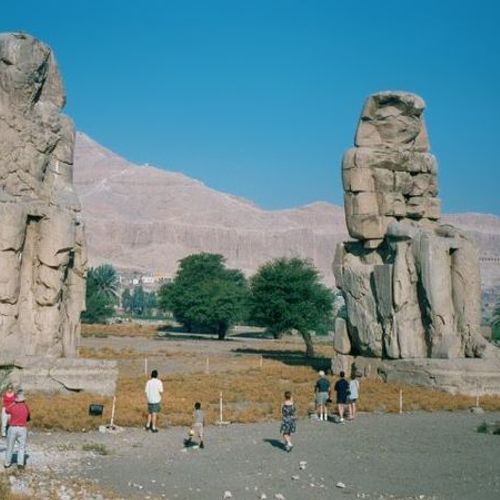
| Added | Wed, 28/06/2023 |
| Источники | |
| Дата публикации | Wed, 28/06/2023
|
| Версии |
In the northwestern Chinese province of Gansu is the city of Dunhuang, which is famous for its singing sand dunes. This phenomenon makes stunningly high sand dunes "sing" in the wind, creating incredibly beautiful music.
The singing sand dunes are the center of many Chinese legends and folklore and are located along the famous Silk Road, an important trade route between Central Asia and Europe. They are also one of the most culturally significant singing sand dunes in China.
Legend has it that this area was once a mountainous region where the Crescent Lake, which is still located at the foot of the dunes, was surrounded by sacred temples. Some believe that the sounds of worship coming from the temples disturbed the Prince of the Yellow Dragon sleeping in the nearby desert, who in anger covered the region and all its inhabitants with sand. It is said that the music heard from the dunes comes from those who are buried inside.
However, the scientific explanation for this phenomenon lies in a number of specific qualities that sand dunes possess. The quality of the grains of sand is just one of the components that make the dunes sing. They consist of small and medium-sized particles, their size ensures better movement and interaction of grains. This, combined with their shape, creates different resonances and frequencies, and smooth round fibers create a better sound.
The formation of dunes can also contribute to their sound, since the steepness of the slope affects the degree of interaction between sand particles. And, of course, the right wind conditions are needed to inflate the particles just enough to create a sound — when the wind is strong, the dunes emit a loud roar, and when the wind is light, the hills emit gentle music.
Surrounding buildings can also create and amplify noise, as mountains and hills create air flow channels that direct the wind to certain areas around the dunes. When the wind disturbs the grains, it creates friction, which in turn causes the sand to vibrate, creating noise. In addition, the air cavities between the grains can work as resonating chambers that amplify sound.
The arid climate also contributes to their sound, so singing dunes are found in a desert environment. Low humidity increases the friction between the grains, creating a sound when they rub against each other.
Constructive and destructive interference with sand vibrations can create standing waves. These are stationary wave structures with fixed ridges and troughs. The combination of grain vibrations, resonance and air cavities creates the characteristic sound of dunes.
In conclusion, the singing Dunhuang sand dunes are a unique natural phenomenon that never ceases to amaze people with its beauty and mystery. Legends and folklore add atmosphere to this picturesque landscape, but the scientific explanation of the phenomenon also captures the imagination.
Новости со схожими версиями
Log in or register to post comments






